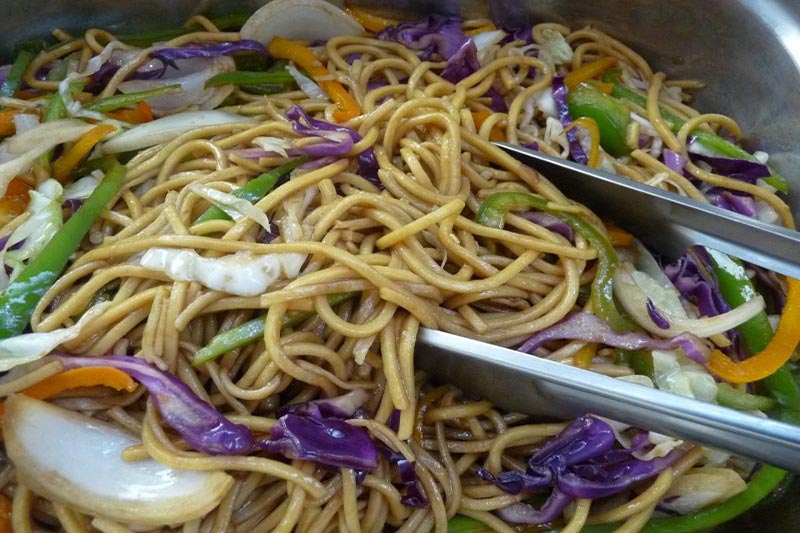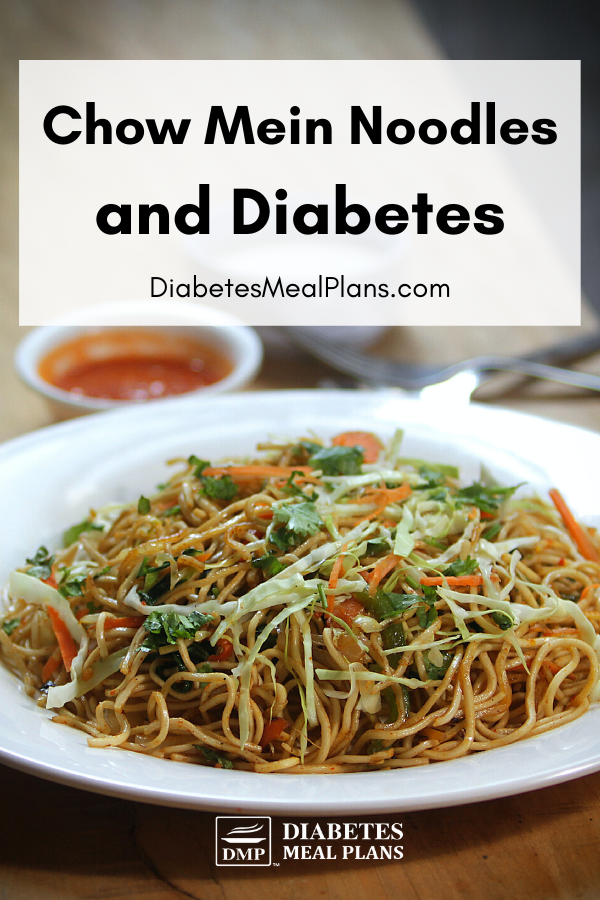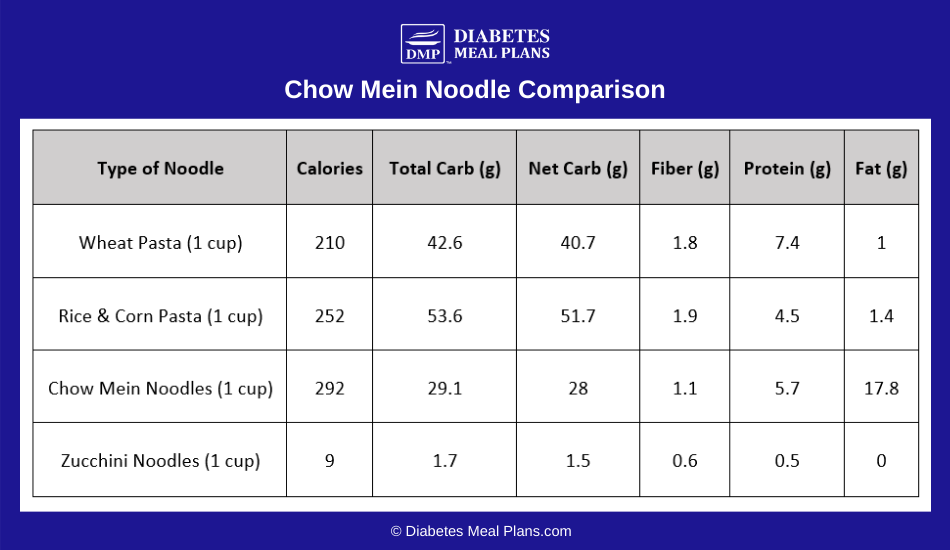Table of Contents[Hide][Show]
To answer this question, we need to consider what chow mein noodles actually consist of and then see how those carbs, fats, and other nutrients compare to other types of pasta noodles.
Ready? Let’s start with some basic info about chow mein…

What’s in Chow Mein Noodles?
Chow mein noodles are a stir fry noodle made from wheat flour and typically fried.
Per cup, there are fewer carbohydrates in chow mein noodles (29g) compared to regular wheat spaghetti noodles (42g), and other types of pasta. However, there is still a high amount of carbohydrates in such a small serving size.
Noodles like chow mein are often served as the main dish so the serving is often way more than just a cup. Chow mein noodles contain about 1 gram of fiber per cup so the net carbohydrates is still very high, about 28g. These numbers are better than whole wheat or rice and corn pasta, but they’re still not great.
Chow mein noodles have the highest amount of fat compared to other pasta since the noodles have added fat to them for frying. Due to the fat content being higher, this drives the calorie content up. Overall, chow mein noodles contain similar amounts of carbohydrates to other pasta but higher amounts of fat and calories.
Since we encourage a low carb diet here are Diabetes Meal Plans, pasta is one of those foods we suggest avoiding to help control blood sugar levels.
Aside from the fact that chow mein noodles are a higher carbohydrate food, there is no real nutrition value in this type of food. They are what we refer to as an “empty carb” food. And not only are these noodles high carb, but the fatty oils they are fried in are typically processed vegetable oils that can be inflammatory (unlike healthy fats).
Ideally, most of the carbohydrates you consume should be nutrient-dense, meaning the food contains a variety of micronutrients plus other beneficial compounds. For example, fresh vegetables are a great source of healthy carbs because they contain the good stuff (vitamins, minerals, fiber) and they don’t contain the not-so-good stuff (fake sugars, flavors, preservatives and additives).

Chow Mein vs. Zucchini Noodles
Let’s compare one cup of chow mein noodles (empty carb) to zucchini noodles (nutrient-dense carb).

Along with less calories and carbs, zucchini noodles provide naturally occurring sources of vitamin C, B6, riboflavin, and Vitamin K.
Any vitamins and minerals found in chow mein are not naturally occurring and are added to the noodles (enriched).
Based on this chart, it should be easy to see that the zucchini noodles are the healthiest option by far! Grain-based noodles, including chow mein, are just too carb-heavy to be worth your while.
Conclusion: Chow Down on Healthier Options
The final answer is: chow mein noodles aren’t much healthier than regular wheat noodles are and we wouldn’t encourage you to eat them if you have diabetes (or even if you don’t).
The carbohydrate content is slightly less than regular pasta noodles but it is still a high carbohydrate food, plus it can be very processed. A better option is to stick with nutrient dense carb choices like non-starchy veggies that provide less carbohydrates and more nutritional value.

Leave a Reply